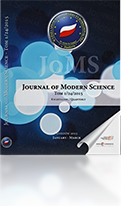Biographical narrative in the novel “Measuring the World” by Daniel Kehlmann
Biographical narrative in the novel “Measuring the World” by Daniel Kehlmann
Author(s): Ivan Megela, Kateryna MehelaSubject(s): Studies of Literature, Sociology
Published by: Wydawnictwo Akademii Nauk Stosowanych WSGE im. A. De Gasperi w Józefowie
Keywords: narrative; genius; progress; introvert; extravert; scientific knowledge
Summary/Abstract: The article studies the problem of biographical narrative in the novel «Measuring the World» by Austrian writer Daniel Kelman. The purpose of the research is to consider genre features of the work, to determine its literary structure, the narrative system in the context of postmodernist Austrian prose, and, in particular, the «magic realism» in Latin American literature; to illustrate how the ironic reinterpretation of traditional forms and postmodern play with mass literature cliches, the combination of an exciting plot and deep philosophical problems allow the writer to carry out the process of decoding, on account of the fact that each reader interprets the text in their own way, subject to their knowledge and world view. Portraying the fate of two German science geniuses of the 19th century, the prominent mathematician Karl Friedrich Gauss and the outstanding naturalist Alexander Humboldt, the Austrian writer depicts two different world views: the theoretical, presented by Gauss, and the practical, introduced by Humboldt. Two different personalities, two different characters are associated with the metaphor «Measuring the world.» It is argued that the combination of two plot lines is something more than just a compositional technique that refers to the peculiar bicentricism on which the entire narrative is based. To achieve the research aim, the following methods are used: biographical, culture-historical, contextual, comparative typological, structural and functional, psychoanalytic. Based upon the analysis, the following results are obtained: it is concluded that the novel «Measuring the world» is one of the most successful German-language novels of recent decades, a striking example of an effective combination of the Austrian literary and artistic tradition with the achievements of the Latin American novel. Subsequently, we have a complex intertexture with ambiguous imagery relative to the ccontemporary patterns in Austrian prose with regard to the renovation of literary language and the transformation of genre forms.
Journal: Journal of Modern Science
- Issue Year: 43/2019
- Issue No: 4
- Page Range: 59-72
- Page Count: 14
- Language: English

